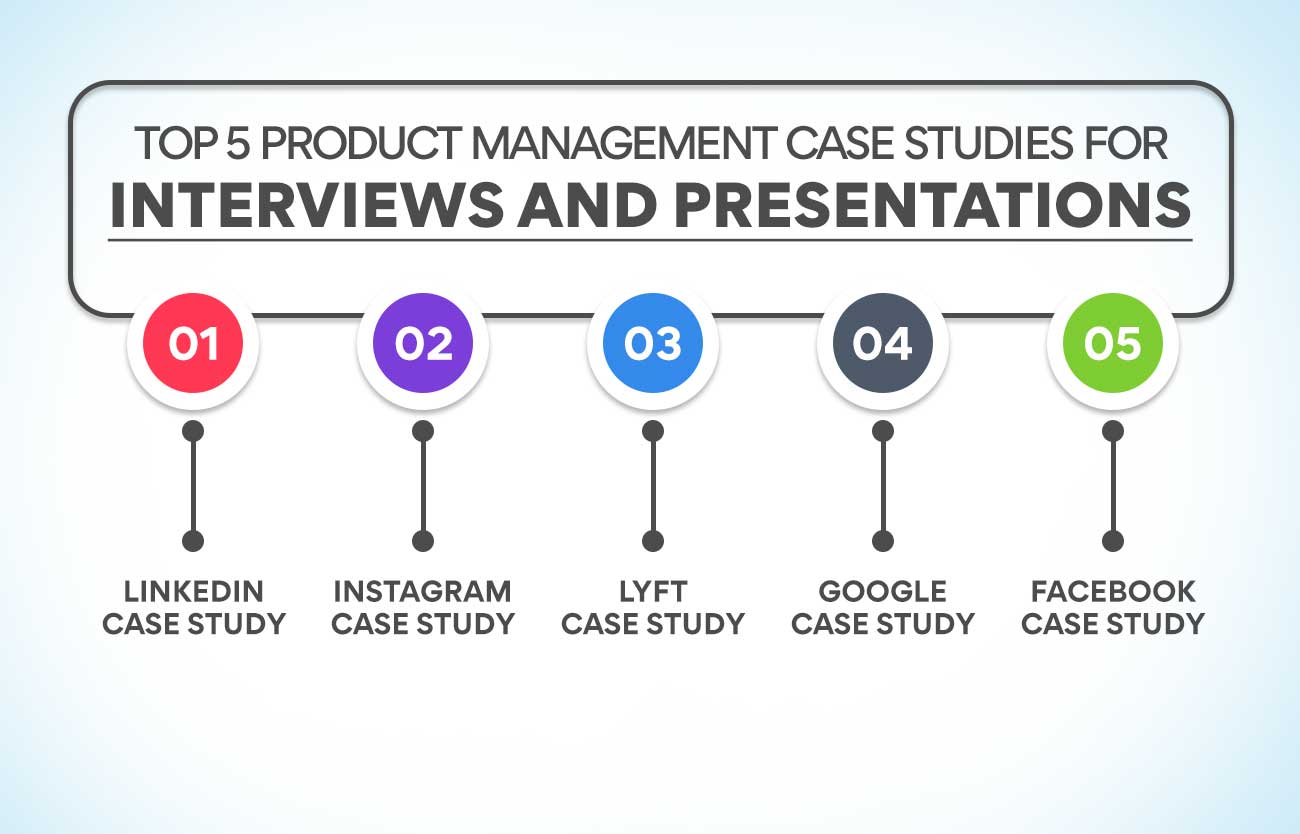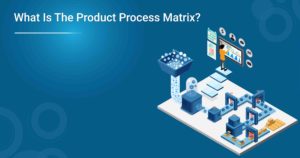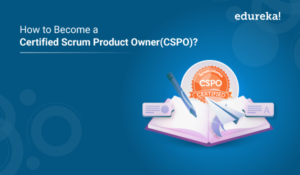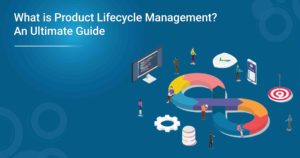Product Management Case Study For Interviews And Presentations: In product management, case studies are an important way to learn from past successes and failures. They can provide insights into how to approach different challenges, what worked well and what didn’t, and help you prepare for interviews and presentations. There are a lot of great product management case studies out there, but we’ve compiled a list of our top 5 favourites.
Product management case study for interviews and presentations
LinkedIn Case Study
In this product management case study, we will look at how LinkedIn uses product management to drive growth and engagement on its platform.
First, let’s look at how LinkedIn approaches product development. The company has a centralized product organization responsible for defining the product strategy and roadmap. This team works closely with engineering, design, and data teams to execute the vision.
LinkedIn has a strong focus on data-driven decision-making. The company relies heavily on analytics to inform its product decisions. For example, LinkedIn looks at usage data to understand how users interact with the platform. This helps them identify areas of opportunity for improvement.
LinkedIn also conducts user research to gain insights into user needs and pain points. It helps them prioritize features and build solutions that address users’ real problems.
Once a feature or solution is built, LinkedIn uses A/B testing to validate whether it successfully achieves its goals. The feature is carried out for all users if the results are positive. If not, it is either improved or scrapped altogether.
Now let’s look at how LinkedIn uses product management to drive growth on its platform. One of the main ways LinkedIn does this is through constant innovation. The company is constantly experimenting with new features and redesigns to keep users engaged.
LinkedIn also uses product management to drive engagement by making it easy for users to connect. For example, LinkedIn has made finding and connecting with potential business contacts easier. The platform also makes it easy to stay in touch with current contacts.
Finally, LinkedIn uses product management to drive growth by acquiring new users. The company uses a variety of acquisition channels, such as paid advertising and partnerships with other companies. LinkedIn also offers a free trial so that new users can use the platform for free before committing to a paid subscription.
Instagram Case Study
In this product management case study, let’s look at one of the hottest social media platforms today – Instagram. We’ll examine how it’s used by businesses and some of the key takeaways for product managers.
Instagram is better known as a photo and video-sharing social platform owned by Facebook, Inc, created by Kevin Systrom and Mike Krieger. It was launched back in October 2010 exclusively for iOS users. The Android version was released two years later, along with a website interface with limited features. Through the app, users can upload photos and videos allows, edit them with filters and add tags and location details.
Users can share their posts with public or pre-approved followers. Users can “like” photos, follow other users’ accounts to see their content in their feed, join groups centred around specific interests (called “Explore”), [and] add new friends easily by finding mutual interests through hashtags or usernames
When it comes to product management, there are some important takeaways to keep in mind from Instagram’s success story:
1) Focusing on user experience is crucial – Instagram has consistently been lauded for its simple and intuitive design. As a product manager, you should always keep the user experience in mind and constantly work with your team to improve it.
2) Data is key – Instagram relies heavily on data to inform its product decisions. As a product manager, you should also use data to understand how users interact with your product and what areas need improvement.
3) Acquisition is important – While initially designed for personal use, Instagram has become increasingly popular for businesses and brands as well. This is mainly due to the platform’s focus on acquiring new users through various channels, such as paid advertising and partnerships with other companies. As a product manager, you should also focus on acquiring and growing your product’s user base.
Lyft Case Study
Lyft is a ride-hailing company that allows users to request rides through a smartphone app. The Lyft platform is powered by an algorithm matching drivers with riders based on their location and destination. When a driver accepts a rider’s request, the two are connected through the app to communicate directly. Riders can also rate their experience with drivers after each ride, which helps to ensure quality control within the network.
In addition to its core ride-hailing service, Lyft also offers other transportation options, such as scooters and bikes, in some markets. The company has also partnered with various automotive manufacturers to develop self-driving cars that could be used on the Lyft platform.
Lyfts’ business model is based on taking a percentage of each fare generated through its platform. The company does not own any of the vehicles used for rides, but it employs a small team of people who work on vehicle maintenance and support.
To use the Lyft app, riders must first create an account and add a payment method. Riders are then able to request a ride by entering their desired destination. Once a driver accepts the request, the rider is notified and given an ETA for the driver.
When it comes to product management, there are some crucial takeaways to keep in mind from Lyft’s success story:
- Companies like Lyft are using data to improve their products and services.
- They are constantly iterating and testing to ensure they provide the best possible experience for their users.
- Lyft has proliferated by focusing on the user experience and providing value through its product.
- There are many lessons that product managers can learn from Lyft’s success story
Google Case Study
Founded in 1998, Google is now the world’s largest search engine. The company has transformed how we access information and has become a significant player in the technology industry.
In 2012, Google released a new version of its search engine that incorporated knowledge from the company’s years of experience in artificial intelligence and machine learning. The “Hummingbird” algorithm was designed to understand the user’s intent better when searching and deliver more relevant results.
The Hummingbird algorithm was a response to how people used Google search, which had changed dramatically in recent years. People were no longer just typing in simple keywords; they were asking questions, using natural language queries, and looking for specific types of information.
The Hummingbird algorithm was a major change for Google, and it required significant changes to how the company approached product management.
In particular, it meant that product managers needed to think about how users searched not just in terms of keywords but also in terms of intent. What did the user want to achieve by performing this search? Was she looking for information? For a specific product? For directions? The answer to this question would determine what results should be returned.
Significant takeaways for product managers from Google’s Case study:
- Google’s success with the Hummingbird algorithm shows the importance of understanding user intent. As a product manager, you should always consider what the user wants to achieve and how your product can help them.
- Google is a data-driven company, and this case study shows how important data can be in informing product decisions. As a product manager, you should always look at data to understand how users interact with your product and what areas need improvement.
- The Hummingbird algorithm was a major change for Google, and it required significant changes to how the company approached product management. This case study shows how important it is for product managers to be flexible and adaptable when changing the product landscape.
Facebook Case Study
The Facebook Case Study for Product Management is a great resource for learning how Facebook operates and makes decisions. The case study provides an in-depth look at the social media giant’s product management process, including how they prioritize and manage products, measure success, and determine what factors go into its decision-making.
Facebook has always been a data-driven company, and it is especially true when it comes to product management. The most exciting aspect of the case study is how Facebook uses data to inform their product decisions.
For example, they have a team of analysts who constantly monitor user behaviour and feedback to identify areas where improvements can be made. This allows them to quickly iterate on existing products or create new ones that address specific user needs.
Another key aspect of Facebook’s product management process is its focus on experimentation. They are constantly testing new features and ideas to see what works best for their users. It allows for bringing innovation rapidly and introducing new products to market quickly.
Significant takeaways for product managers from Facebook’s Case Study:
- Facebook is a data-driven company, and that is especially true when it comes to product management. As a product manager, you should always look at data to inform your decisions.
- Facebook puts a strong emphasis on experimentation. They are constantly testing new features and ideas to see what works best for their users. As a product manager, you should also be willing to experiment and try new things.
- Facebook has a team of analysts who constantly monitor user behaviour and feedback to identify areas where improvements can be made. As a product manager, you should also monitor user feedback and use it to inform your product decisions.
How To Best Use A Product Management Case Study? 5 Tips To Read A Case Study
- Read the case study thoroughly before attempting to answer any questions.
- Understand the real-world problem that the company was facing and how they went about solving it.
- Pay attention to the details of the implemented solution – this will give you insight into how creative and resourceful the team was.
- Critically assess the results of the case study – were the objectives met? Was the solution effective?
- Use what you’ve learned from reading the case study to prepare for interviews or presentations, and remember to practice your product management skills!
What Challenges And How To Overcome Them During An Interview or Presentation?
When it comes to interviews and presentations, product managers often face the challenge of having to present their product in the most favourable light possible while still being honest about its potential flaws.
Additionally, they may also be asked tough questions about the product by interviewers or audience members that they must be prepared to answer. However, by preparing for both the interview and presentation beforehand, product managers can increase their chances of success.
Some specific tips for preparing for an interview or presentation include:

1) Knowing your audience: It is essential to consider which will be listening to or watching your presentation. This will help you tailor your message accordingly.
2) Being prepared: Be sure to rehearse your presentation ahead of time so that you are familiar with the material and feel confident when delivering it.
3) Anticipating questions: Try to anticipate any tough questions that you may be asked about your product and have thoughtful answers prepared in advance.
4) Be genuine: Be honest about your product’s good and bad aspects. Your audience will appreciate your candour, and it will help build trust.
By following these tips, product managers can increase their chances of delivering a successful interview or presentation.
How Can A Product Management Course Help?
Product management is a process that includes everything from ideation to delivery and post-launch analysis. A product manager looks after a product’s complete lifecycle, including market research, product planning, development, launch, marketing, and support.
A good product manager course will teach you how to effectively manage all aspects of a product’s life cycle. You’ll learn how to assess customer needs and desires, develop market-driven products, create go-to-market strategies, launch products successfully, and measure and analyze post-launch performance.
In addition to these essential skills, a quality product management course will also give you the tools you need to manage a team of developers, designers, marketers, and support staff. You’ll learn how to delegate tasks efficiently and communicate with stakeholders at different levels of an organization.
We have a course that will allow you to learn everything about product management at your own pace. With our Advanced Executive Certificate in Product Management, you can grab all the knowledge and expertise required to ace your product management interview or presentation.
Conclusion
In conclusion, these five product management case studies are great examples of approaching different aspects of the job. From developing a new product to managing a team, each case study provides valuable insights that can help you in your career.
Don’t forget to check our course Advanced Executive Certificate in Product Management.






_1668670867.jpg)





















